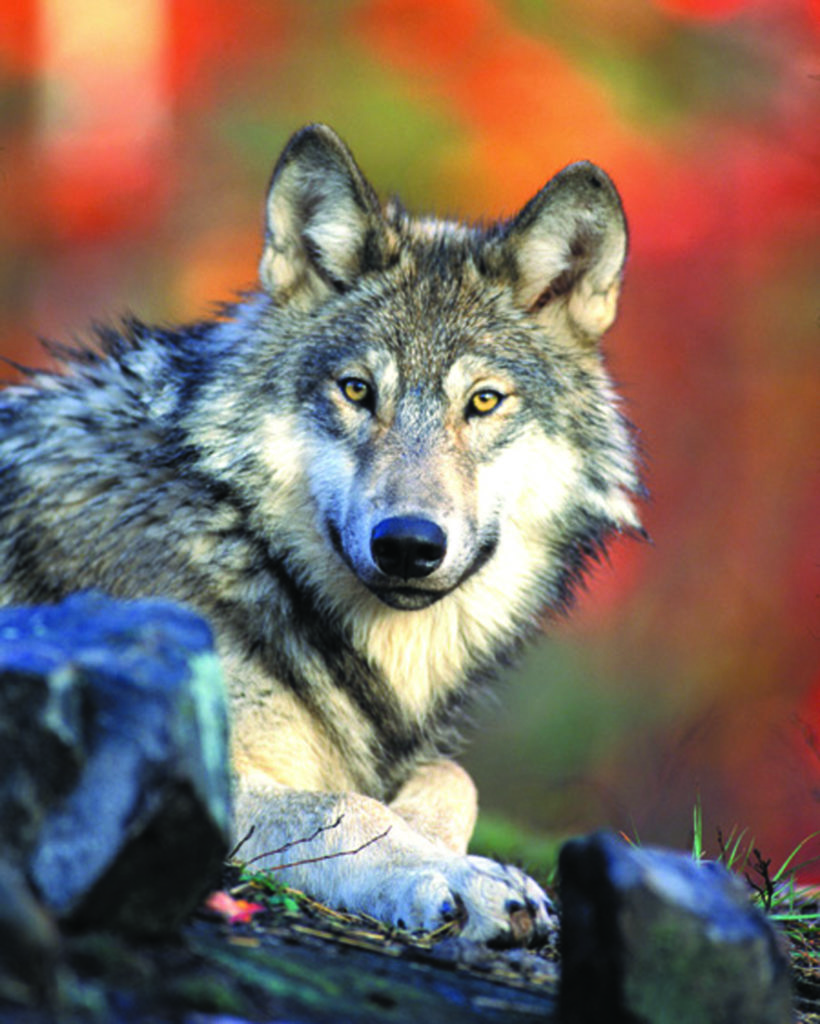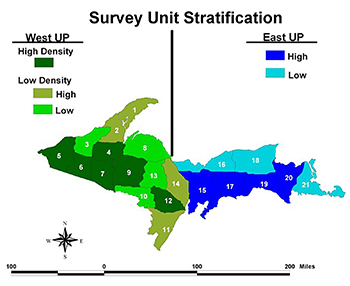New business included a review of sections 6.3 and 6.5 from the 2015 Wolf Management Plan. Old business included voting on recommendations to section 6.2 of the 2015 plan.
Council members first heard from Department of Natural Resources (DNR) Biologist Brian Roell regarding section 6.5 (maintain habitat necessary to sustain a viable wolf population ) of the 2015 Wolf Management Plan. He confirmed that wolves are habitat generalists and they are found in greater densities where there is greater availability of prey, which in Michigan is primarily white-tailed deer.
MUCC Executive Director Amy Trotter said Roell’s presentation highlighted the need for continued habitat management across Michigan’s Upper Peninsula.
“Writing and adhering to forest management plans with wildlife habitat at the forefront, including a goal of no net loss of aspen, will be helpful to both deer and wolves,” Trotter said. “Resiliency and growth of the deer population is best achieved with healthy habitat first and foremost.”
Lt. Dave Shaw, assistant chief of DNR Law Enforcement Division, then presented on section 6.3 (enact and enforce regulations necessary to maintain a viable wolf population) of the 2015 plan, building off of Roell’s presentation on the mortality factors of radio-collared wolves.
Roell said data shows that human-caused mortality on radio-collared wolves accounts for more than 60 percent of mortality; however, only 58 collared wolves were illegally killed since 2006. Shaw said less than 20 percent of illegal taking of wolves cases have been solved in the last five years.
Ensuring the council’s recommendations align with habitat and enforcement needs will be critical in establishing a solid foundation for Michigan’s wolf management in the future, said Amy Trotter, Michigan United Conservation Clubs (MUCC) executive director.
“We know that loss of hunting privileges is a deterrent for poaching, and MUCC members have been supportive of increased poaching fines and penalties,” Trotter said. “Once wolves are properly managed as a game species, MUCC members may consider enhanced poaching penalties accordingly.”
Council members approved the following recommendations in relation to section 6.2 (maintain active research and monitoring programs to support science-based wolf management). All amendments were proposed by Bee Friedlander (Attorneys for Animals):
- Actively seek research and funding partners who represent the full range of perspectives on wolves and wolf management.
- Increase cooperative working relationships with federally recognized Tribes
- Address the impacts and effects of climate change
- Examine effective non-lethal measures to address conflicts
Trotter held over recommendations regarding specific research initiatives until the January 2022 meeting when council members will receive results from the public attitudes survey (Michigan State University) and scientific literature review (DNR).
The WMAC is comprised of six members: Dan Kennedy representing the DNR, Trotter representing a conservation organization (Michigan United Conservation Clubs), Mike Thorman representing a hunting organization (Michigan Hunting Dog Federation), Miles Falck representing tribal interests (Great Lakes Indian and Fish and Wildlife Commission), Dick Pershinske representing agricultural interests (Upper Peninsula resident) and Friedlander representing an animal advocacy organization (Attorneys for Animals).
Michigan’s minimum winter wolf population estimate is 695 wolves (winter 2019-2020), according to the DNR — greater than the original population minimum of 200 required for delisting established by the DNR in 1997.
In late 2020, the Trump administration delisted the gray wolf from the Endangered Species Act and handed management of the species back to states. That delisting has been challenged by anti-hunting organizations in a California federal court.







